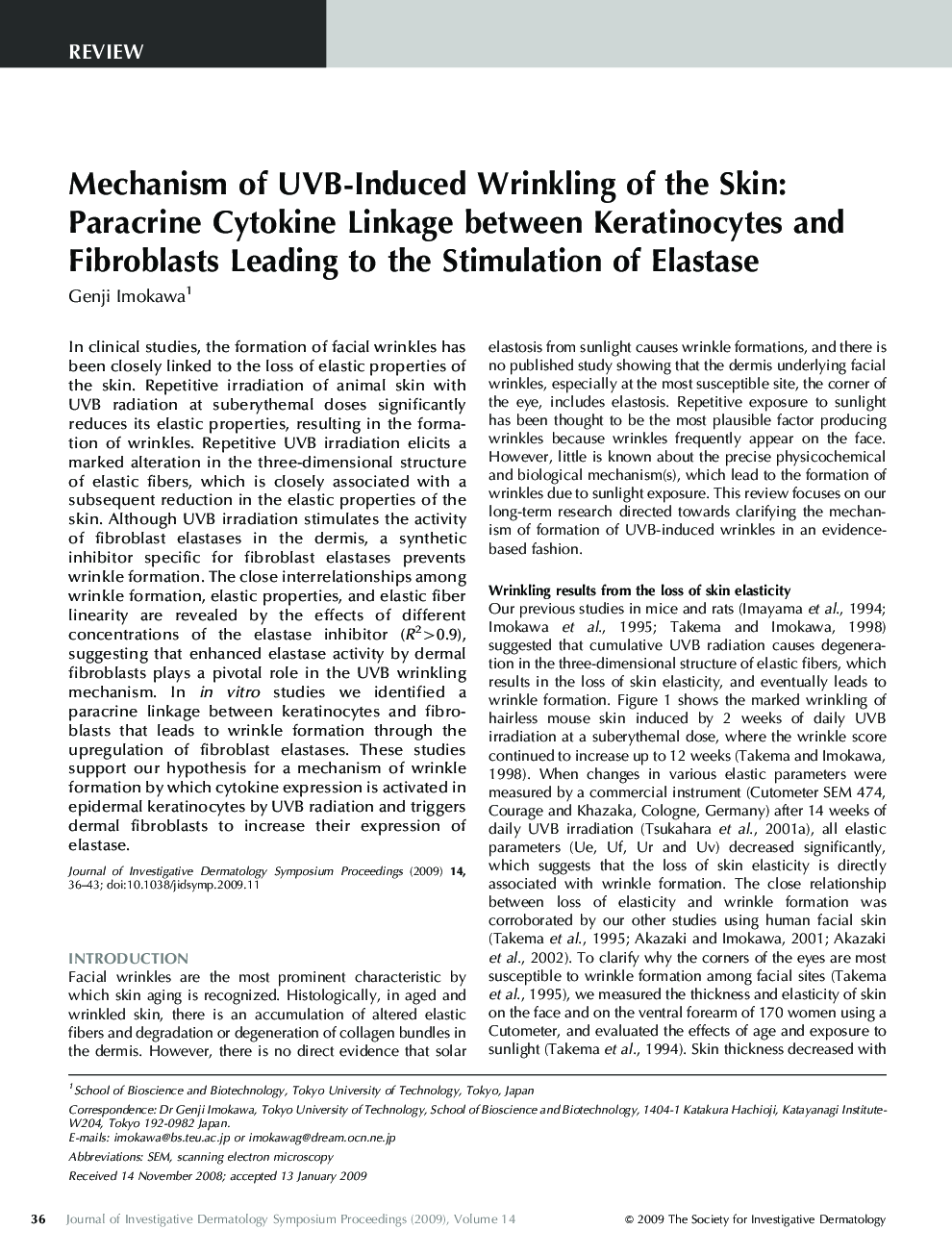| Article ID | Journal | Published Year | Pages | File Type |
|---|---|---|---|---|
| 3218977 | Journal of Investigative Dermatology Symposium Proceedings | 2009 | 8 Pages |
In clinical studies, the formation of facial wrinkles has been closely linked to the loss of elastic properties of the skin. Repetitive irradiation of animal skin with UVB radiation at suberythemal doses significantly reduces its elastic properties, resulting in the formation of wrinkles. Repetitive UVB irradiation elicits a marked alteration in the three-dimensional structure of elastic fibers, which is closely associated with a subsequent reduction in the elastic properties of the skin. Although UVB irradiation stimulates the activity of fibroblast elastases in the dermis, a synthetic inhibitor specific for fibroblast elastases prevents wrinkle formation. The close interrelationships among wrinkle formation, elastic properties, and elastic fiber linearity are revealed by the effects of different concentrations of the elastase inhibitor (R2>0.9), suggesting that enhanced elastase activity by dermal fibroblasts plays a pivotal role in the UVB wrinkling mechanism. In in vitro studies we identified a paracrine linkage between keratinocytes and fibroblasts that leads to wrinkle formation through the upregulation of fibroblast elastases. These studies support our hypothesis for a mechanism of wrinkle formation by which cytokine expression is activated in epidermal keratinocytes by UVB radiation and triggers dermal fibroblasts to increase their expression of elastase.
